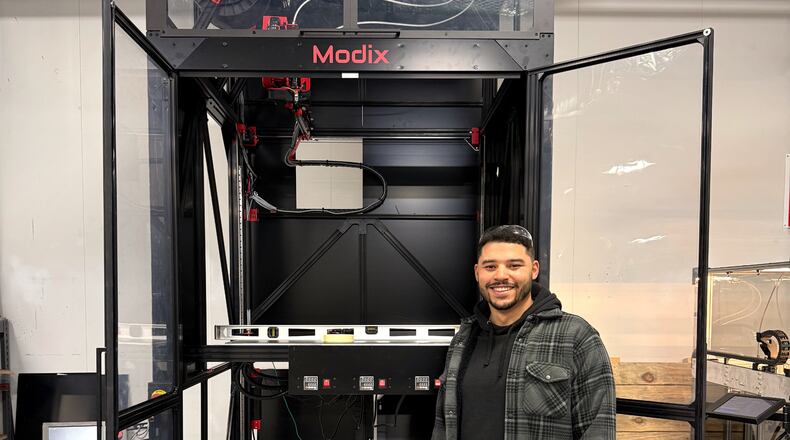“The 12-month initiative represents a significant step forward in the production of critical aircraft parts,” Cornerstone said in a new release.
It’s a project the company said required a dozen researchers and two consulting firms to make happen.
Air Force engineers don’t need to be sold on the utility of 3D printing. The Rapid Sustainment Office — part of the Air Force Life Cycle Management Center at Wright-Patterson Air Force Base — is the same outfit that supplied printed parts to C-5 Super Galaxy maintainers at Robins Air Force Base in Georgia.
“All the aircraft we’ve worked on so far with these improved materials and processes — we’ve haven’t had any issues,” Clay Elliott, a C-5 structural engineering subject matter expert, said in 2023.
For Ian Fuller, Cornerstone principal investigator on the project, 3D printing — also known as “additive manufacturing” or simply “AM” — offers plenty of opportunity.
He said the goal is to “produce high-quality, certifiable parts, moving beyond simple models and prototypes to components capable of withstanding real-world operational demands.”
Cornerstone said the program was officially launched in September.
One key difference with this printer, according to Cornerstone: The company employs what it calls “cooling mechanisms” to ensure the structural integrity of printed parts under high-temperature conditions.
“Scaling high-temperature additive manufacturing to this level requires us to rethink nearly every aspect of the process,” said deputy project leader Kevin Blount.
The Air Force has long seen the potential in 3D printing, and Dayton players have helped realize that potential.
Two years later, Will Roper, then the Air Force assistant secretary for acquisition, technology and logistics, spoke of making critical spare parts with 3D printing.
Cornerstone, a privately held business that started with 1,200 square feet in Beavercreek, today has nearly 200,000 square feet in a former Mead facility, with plans for two additional buildings on 63 acres.
About the Author

